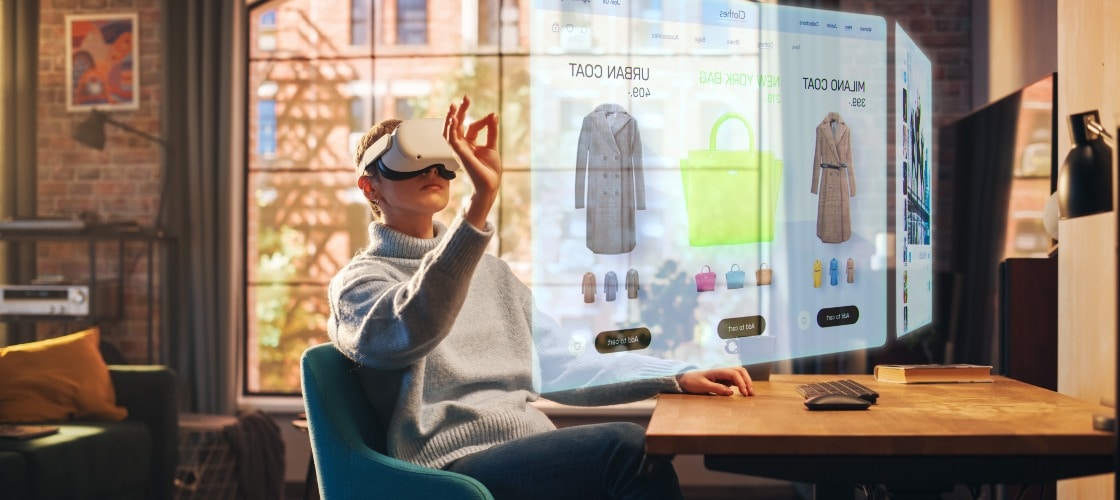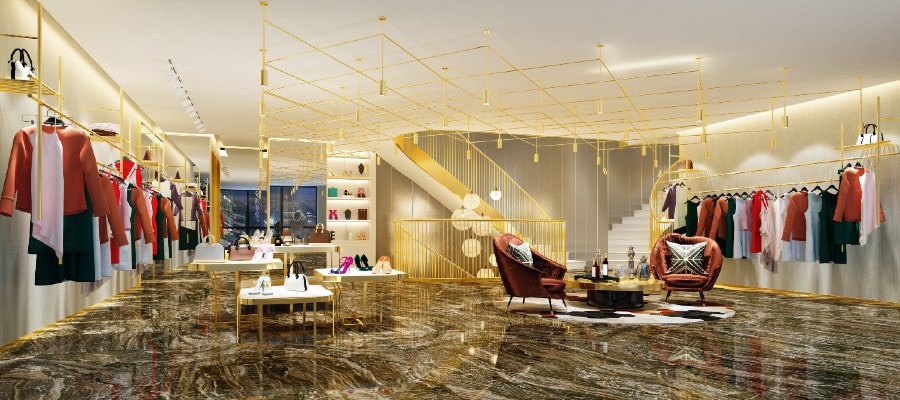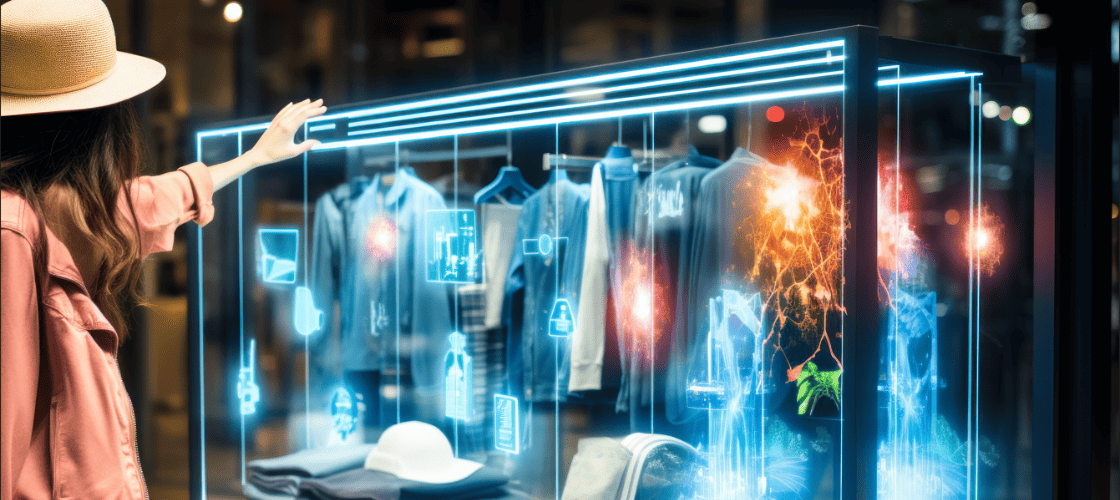Retail & Distribution
The future of retail invents itself in the metaverse
10 August 2022

1. Metaverse and Web 3.0: What is it?
Why a third generation for the Internet?
Several building blocks of web 2.0 have given rise to a need for evolution:
- The issue of protecting and securing personal data
- GAFAM’s misuse of market power and the loss of confidence in these digital giants
Even though it still looks like the “New Wild West” as explained by the speaker Éric Briones, managing director at Journal du Luxe, web 3.0 wants to restore its place with the notions, based on value, independence, and transparency. The increasing presence of connected objects in our daily lives, goes hand in hand with the web’s evolution.
Brands have been expressing themselves on their website until now (the 1.0 era), then on their blogs and social networks (web 2.0 era). With web 3.0, they’ll take the floor within their own metaverse, known as microverse.
2. Web 3.0 and the metaverse: what is the potential for brands?
What is the paradigm shift required by the web 3.0?
By entering the metaverse realm, consumers will be able to live immersive virtual experiences. This web 3.0 – which owes it all to the world of gaming – plunges our reality within a digital universe where we take action, just like in real life: we can go to concerts, events, carry out purchases, exchange with community members, visit museums…
Metaverse, sustainability, data, and the role of sales associates: Retail’s new challenges
Everything you need to know about the major developments and trends in retailing
Read moreWho is the target public?
The targets at which brands are going to address are mainly generations Y, Z and Alpha. Generation Y is also known as Millennial and it highlights the birth of “digital natives”, those who are familiar with video games and the dawn of the Internet, from an early age.
1997 onward, one began talking about Gen Z. This was followed by the Alpha generation, who are born between 2010 and 2025. The oldest Alphas will be adults in 2030. Thus, they’ll be seeing the complete deployment of web 3.0. According to the figures quoted by Eric Briones during the Cegid Connection Retail, it is believed that the Alpha generation will spend 10 years of their lives within a metaverse.
Éric Briones
What are the essential features of web 3.0?
This new web shares the values of luxury, fashion, and beauty, which is much more and better than web 1.0 and web 2.0. In web 3.0, the creation of rarity, exclusivity and the expression of social status have their rightful place.
Internet users will be active within the metaverse, through the form of an avatar, which shall be highly personalized and centralize a lot of data, to properly adapt the user experience. Shopping, events, or exclusive services will help reward its best customers: the possibilities of the metaverse are endless, when it comes to the retail sector.
However, the essential feature of web 3.0 concerns its own economy. Cryptocurrencies are already used to acquire NFTs (Non-Fungible Tokens), titles of ownership of a digital object which is registered in the blockchain, that is impossible to duplicate or erase. The fields of luxury and fashion know the added value of the intangible aspect, its ability to give surplus value to a given object: but what is an NFT if not an intangible object?
-Rhea Myers , digital artist
According to Ian Rogers, former Chief Digital Officer at LVMH, everyone will have a digital closet within 5 years, to store their digital clothes in. Intangible in real life but not in the metaverse, where the notion of value, traceability and exclusivity takes on its full importance.
The luxury sector will be on web 3.0 and in the metaverse.
Luxury will also be able to regain control in the second-hand market. Éric Briones takes the 3.0 strategy of the luxury brand Breitling, as an example. Every single watch is sold, will be accompanied by a unique and traceable NFT. By integrating the NFT of the product within its CRM, the brand will be able to follow the commercial path of its products, right from the initial sale to any resale. Digital data and data from the physical world, will merge in the form of a product passport. It is understandable that NFTs are not just an abstract property but the digital continuity of a physical object, capable of improving the customer experience, by offering additional services.
3. How can brands enter the world of the metaverse?
These new digital universes are in the process of being built, but some leading brands seem to already occupy the field, through their own metaverse. Experts predict that each brand will have their own metaverse within 2-5 years. But how can one become part of this digital revolution, today?
According to Éric Briones, it’s a rather simple solution: go back to the sources of web 3.0 and call on the world of gaming. This translates into a new turmoil for the luxury sector, which will have to lean on the skills of a world, that is unknown to the latter. The idea? Create unique immersive experiences for one’s customers, sensory spaces where one can imagine a unified stock for retailers, between NFT sales and virtual fittings of physical products to order, pick up in a store… So, this is a complete paradigm shift and it’s wise to be one step ahead.
The first steps within web 3.0
Éric Briones recommends beginning with one-time and thrilling offers, such as Event 3.0 and the creation of virtual pop-up stores, in a metaverse which already exists, where the donation of NFT is linked to a brand during a physical event, just like Cegid did during Cegid Connections Retail 2022. It is essential to think about your strategy rather than rush headlong, to equip oneself with useless NFT gadgets and lose brand value.
Moreover, keep mulling over the key question: why have we joined the metaverse, why do we buy NFTs? For the pleasure of owning, the thrill of collecting, self-expression which is so important for the Z and Alpha generation and compatible with the values of luxury and retail.
Management needs to re-invent itself as well: by recruiting video game experts. Brands will need to go with the flow, while mobilizing the businesses, to design a new brand universe and succeed within their digital transformation in Web 3.0.
Nevertheless, one prepares for retail to enter the metaverse, in the real world, starting with the establishment of a unique customer relationship between the digital and physical aspect, but also the unified stock. Responding to the new consumption habits of one’s customers and offering them a personalized experience, is a first step towards entering the metaverse.
Debating the Future of Stores
How do stores need to change in order to respond to the needs of the connected consumer? Discover what the industry experts think
Read more

